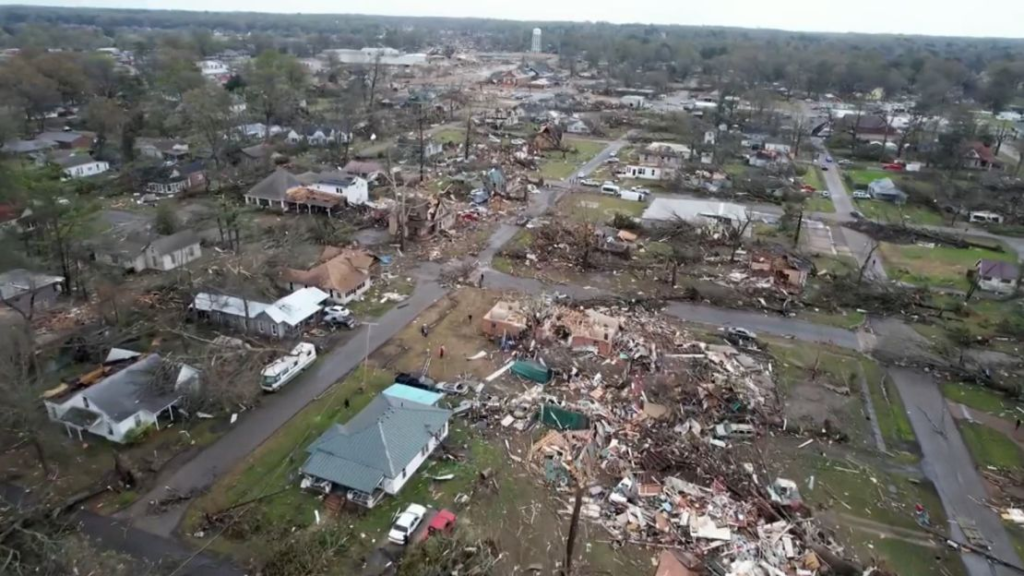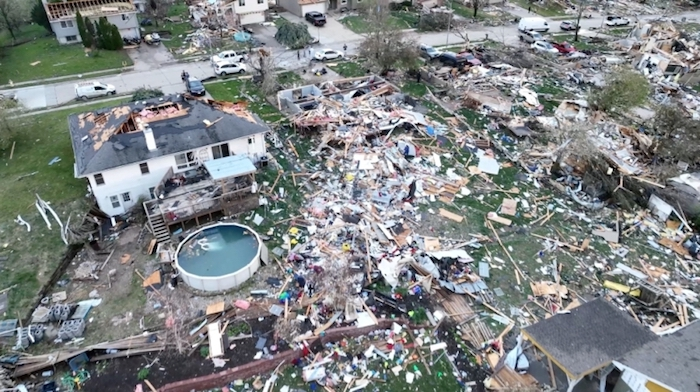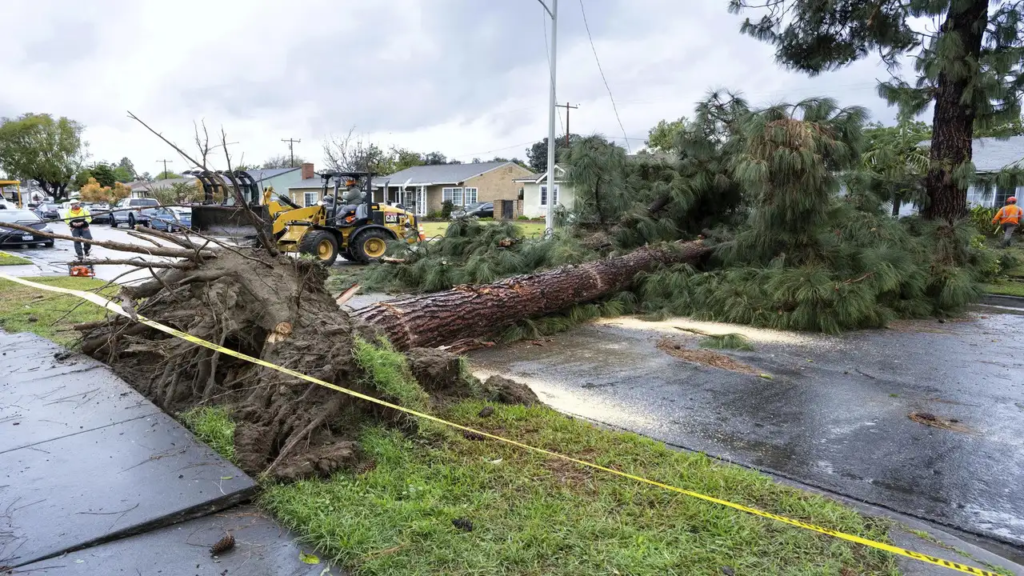In late May 2025, the Central United States has been battered by a series of relentless storms and tornadoes, claiming lives, destroying homes, and testing the resilience of communities across multiple states. The National Weather Service issued warnings of ongoing dangerous weather conditions after four days of violent tornadoes, thunderstorms, and heavy rain that have killed more than two dozen people and left thousands grappling with the aftermath. This catastrophic weather event, described as “unprecedented” by local officials, has left a trail of destruction stretching across the heartland, with recovery efforts now underway but facing significant challenges.

A Devastating Toll on Lives and Infrastructure
The storms, which began their destructive path in mid-May, have caused widespread devastation, particularly in states like Oklahoma, Missouri, and Iowa. One official described the damage as “eight miles of pure destruction—at times a mile wide,” with thousands of buildings reduced to rubble. Entire neighborhoods have been flattened, power lines toppled, and critical infrastructure damaged, leaving many residents without electricity or access to basic necessities. The National Weather Service reported that the storms’ intensity and scale were rare, even for a region accustomed to severe weather.
The human cost has been staggering. At least 24 fatalities have been confirmed, with many more injured. Families are mourning loved ones while facing the daunting task of rebuilding their lives. In one heartbreaking account, a Missouri resident described returning to their home only to find it completely leveled, with personal belongings scattered across fields. “We’re talking about thousands of buildings,” a local official said at a Monday news conference, emphasizing the scale of the destruction. The storms’ impact has been felt not only in rural areas but also in urban centers, where businesses and schools have been forced to close temporarily.
For the latest updates on the storms’ impact, visit PBS News.
Communities Rally Amid Ongoing Threats
Despite the devastation, stories of resilience and community spirit are emerging. Volunteers, first responders, and local organizations have mobilized to provide shelter, food, and supplies to those affected. In Oklahoma, a local church opened its doors to house displaced families, while in Iowa, community members organized cleanup efforts to clear debris from roads and homes. “We’ve seen neighbors helping neighbors, strangers stepping up—it’s what we do in times like these,” said a volunteer coordinator in Missouri.

However, the National Weather Service has warned that the threat is far from over. Forecasts indicate that dangerous weather conditions, including the potential for additional tornadoes, could persist in the coming days. This ongoing risk complicates recovery efforts, as emergency teams must balance immediate relief with preparations for further storms. Residents are being urged to stay vigilant, keep emergency kits ready, and follow local weather alerts.
For real-time weather updates and safety tips, check the National Weather Service.
The Broader Context: Climate and Infrastructure Challenges
The storms have reignited discussions about the increasing frequency and intensity of extreme weather events in the Central U.S. Climate experts point to rising global temperatures as a contributing factor, noting that warmer air holds more moisture, fueling powerful storms and tornadoes. While no single event can be directly attributed to climate change, the pattern of destructive weather in the Midwest has raised concerns about long-term preparedness. “We’re seeing storms that are bigger, stronger, and more frequent,” said a climatologist interviewed by PBS News. “Communities need to adapt, from better building codes to improved early warning systems.”
The storms have also exposed vulnerabilities in the region’s infrastructure. The power outage in New Orleans, which affected over 100,000 Entergy customers on May 25, 2025, highlighted the fragility of the electrical grid. Initiated by a “load shed” order from the Midcontinent Independent System Operator (MISO) to prevent grid overload, the outage left residents and city leaders frustrated, with no clear timeline for full restoration. This incident, while separate from the tornadoes, underscores the broader challenge of maintaining reliable power during extreme weather events.
For more on the New Orleans power outage, see CNBC-TV18.
Economic and Social Impacts
The economic toll of the storms is still being assessed, but early estimates suggest damages could reach billions of dollars. Small businesses, particularly in rural areas, face significant challenges as they navigate insurance claims and lost revenue. Farmers, already struggling with unpredictable weather patterns, have reported extensive crop damage, further threatening livelihoods. “This isn’t just about rebuilding homes,” said a local business owner. “It’s about rebuilding entire communities and economies.”
Socially, the storms have disproportionately affected vulnerable populations, including low-income families and the elderly, who may lack the resources to recover quickly. Relief organizations are prioritizing aid to these groups, but the scale of the disaster has stretched resources thin. Federal and state governments have pledged support, with emergency funds allocated for disaster relief, but some residents worry that aid may be slow to arrive.

Looking Ahead: Recovery and Resilience
As the Central U.S. begins the long road to recovery, questions about preparedness and resilience are at the forefront. Local governments are calling for federal assistance to rebuild infrastructure and strengthen defenses against future storms. Community leaders are also advocating for mental health support for residents traumatized by the loss of homes and loved ones. “We need to come together, not just to rebuild but to make sure we’re ready for the next one,” said a city council member in Iowa.
Nationwide, the storms have drawn attention to the importance of disaster preparedness. Experts recommend that families maintain emergency plans, including evacuation routes and communication strategies, and keep supplies like water, food, and batteries on hand. Community-level efforts, such as improving storm shelters and early warning systems, are also critical to reducing future losses.
A Call for Unity and Action
The Central U.S. storms of May 2025 have left an indelible mark on the region, but they have also showcased the strength and determination of its people. From volunteers clearing debris to neighbors offering shelter, the response to this tragedy reflects the heart of American communities. As recovery efforts continue, the focus must shift not only to rebuilding but also to preparing for a future where such events may become more common.
For those looking to help, local relief organizations are accepting donations and volunteers. Staying informed through trusted news sources and supporting affected communities can make a meaningful difference. Together, the Central U.S. can emerge stronger, united in the face of adversity.
For additional ways to support relief efforts, visit PBS News.
Must Read :- Sustainable Jewelry Made from Recycled Materials Gains Traction Among Eco-Conscious Consumers in the USA





